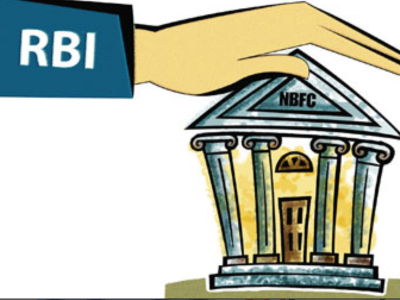Non-Banking Financial Companies (NBFCs) are essential players in India's financial ecosystem. They provide crucial financial services such as loans, credit facilities, asset financing and investment services, often reaching segments of the population that traditional banks do not adequately serve. However, since NBFCs do not have banking licenses, they are subject to a distinct regulatory framework to ensure financial stability and consumer protection.
The Reserve Bank of India (RBI) is the primary regulatory authority overseeing NBFCs, ensuring that they maintain financial discipline, transparency and ethical operations. RBI's regulations aim to safeguard depositors, maintain liquidity and prevent financial crises within the NBFC sector.
This blog provides an in-depth look at RBI's regulations for NBFCs, covering licensing requirements, capital adequacy norms, governance, asset classification, liquidity management and recent regulatory changes.
Understanding NBFCs and Their Role
NBFCs operate as financial intermediaries but differ from banks in several key ways. They provide credit and financial assistance to businesses and individuals but cannot accept demand deposits like banks. Their operations are crucial in expanding financial inclusion, especially in rural and semi-urban areas where banking infrastructure is limited.
Unlike banks, NBFCs do not participate in the payment and settlement system, meaning they cannot issue cheques drawn on themselves. However, they offer a wide range of financial services, including microfinance, vehicle loans, housing finance, infrastructure funding and investment opportunities.
Due to their increasing significance in the financial sector, the RBI closely regulates their operations to maintain economic stability and prevent systemic risks.
Key RBI Regulations for NBFCs
1. NBFC Registration and Licensing Requirements
Every NBFC must be registered with the RBI under Section 45-IA of the RBI Act, 1934. The registration process ensures that only financially sound and responsible entities can operate as NBFCs. To obtain an NBFC license, the applicant company must meet certain criteria:
- The company must be incorporated under the Companies Act, 2013.
- It must have a minimum Net Owned Fund (NOF) of ₹2 crore. However, certain types of NBFCs, such as microfinance institutions, may have different NOF requirements.
- The promoters and directors should have a clean financial record, with no involvement in fraudulent or illegal activities.
- The business model must align with RBI guidelines, ensuring compliance with risk management and capital adequacy norms.
Upon fulfilling these criteria, the company can submit an online application through the RBI’s portal, followed by physical documentation. RBI reviews each application thoroughly before granting an NBFC license.
2. Classification of NBFCs as per RBI
The RBI classifies NBFCs based on their size, activities and deposit-taking abilities. This classification ensures that each NBFC is subject to regulations proportional to its risk level and impact on the financial system.
NBFCs are primarily divided into two broad categories:
- Deposit-taking NBFCs (NBFC-D): These NBFCs are allowed to accept public deposits and are subject to stringent RBI regulations to ensure depositor protection.
- Non-Deposit Taking NBFCs (NBFC-ND): These NBFCs do not accept deposits from the public but offer financial services such as loans, credit and asset financing.
Additionally, NBFCs with assets of ₹500 crore or more are classified as Systemically Important NBFCs (NBFC-ND-SI). These entities have significant financial impact, requiring additional regulatory oversight.
NBFCs are also categorized based on their business activities, such as microfinance institutions, housing finance companies, infrastructure finance companies, investment and credit companies and asset finance companies.
3. Capital Adequacy Requirements for NBFCs
To ensure financial stability, RBI mandates that NBFCs maintain a Capital Adequacy Ratio (CAR), which represents their ability to absorb financial losses. The minimum CAR requirement varies based on the type of NBFC.
-
Deposit-taking NBFCs (NBFC-D) must maintain a minimum CAR of 15%.
-
Systemically Important NBFCs (NBFC-ND-SI) are also required to have a minimum CAR of 15%.
-
Other NBFCs may have different requirements depending on their operations and risk exposure.
Capital adequacy norms prevent excessive lending and ensure that NBFCs have sufficient capital buffers to manage financial risks effectively.
4. Asset Classification and Provisioning Norms
RBI has established Non-Performing Asset (NPA) classification norms to ensure that NBFCs maintain financial discipline and do not accumulate excessive bad loans. Loans and advances must be classified into different categories based on the number of overdue days:
- Standard Assets: Loans that are being repaid on time without any overdue payments.
- Substandard Assets: Loans that are overdue for more than 90 days.
- Doubtful Assets: Loans that have remained overdue for more than 12 months.
- Loss Assets: Loans that have been identified as unrecoverable by the NBFC’s auditors or regulators.
NBFCs must set aside provisions for each category of NPA, ensuring that they have adequate financial reserves to absorb potential losses.
5. Liquidity Risk Management Framework
RBI has introduced Liquidity Coverage Ratio (LCR) requirements for large NBFCs to prevent liquidity crises. The LCR ensures that NBFCs maintain sufficient liquid assets to meet short-term financial obligations.
NBFCs must conduct stress testing to assess their liquidity risks under adverse financial conditions. They must also submit periodic reports to RBI, detailing their liquidity position, asset-liability management and contingency funding plans.
6. Corporate Governance and Board Oversight
RBI mandates that NBFCs follow strict corporate governance norms to ensure transparency and accountability. Key governance requirements include:
- The Board of Directors must include independent directors who can provide unbiased oversight.
- NBFCs must establish audit committees to review financial statements and internal controls.
- Large NBFCs are required to appoint a Chief Risk Officer (CRO) to monitor financial risks and compliance.
Strong corporate governance ensures that NBFCs operate with integrity, reducing the risk of financial fraud and mismanagement.
7. RBI Guidelines on Fair Lending Practices
To protect borrowers from unfair practices, RBI has introduced a Fair Practices Code (FPC) that NBFCs must adhere to. Key provisions include:
- Clear and transparent disclosure of loan terms, including interest rates, processing fees and penalties.
- Ethical debt collection practices, ensuring that recovery agents do not engage in harassment or intimidation.
- Strict guidelines for digital lending platforms operated by NBFCs to prevent fraudulent activities and misuse of customer data.
These fair lending norms enhance customer trust and promote responsible lending practices.
Recent Updates in RBI Regulations for NBFCs (2023-2024)
RBI continuously updates its regulatory framework for NBFCs to address emerging risks and market dynamics. Some recent regulatory changes include:
- Introduction of Scale-Based Regulation (SBR), classifying NBFCs into four layers based on their size and complexity.
- Increased capital requirements for certain NBFC categories to strengthen financial stability.
- Stricter norms for digital lending to curb fraud and ensure customer data protection.
- Mandatory implementation of Core Financial Services Solutions (CFSS) for large NBFCs to enhance digital operations.
These changes reflect RBI's commitment to ensuring a robust and resilient NBFC sector.
RBI's regulatory framework for NBFCs is designed to ensure financial discipline, protect depositors and maintain economic stability. As the NBFC sector continues to evolve, compliance with RBI regulations remains essential for sustained growth and trust in the financial system.
By adhering to capital adequacy norms, liquidity requirements, governance standards and fair lending practices, NBFCs can contribute effectively to India's financial landscape while maintaining stability and transparency.

